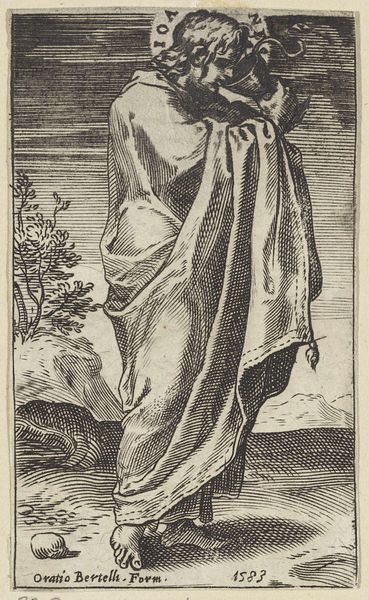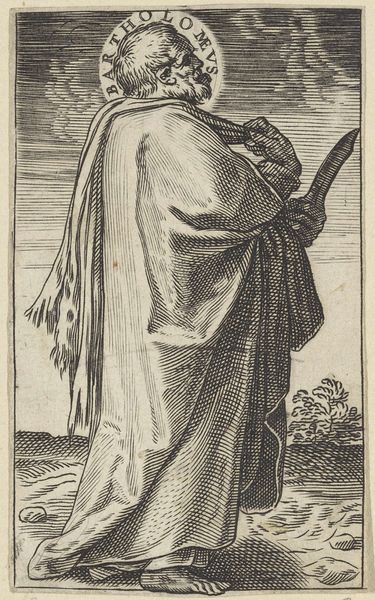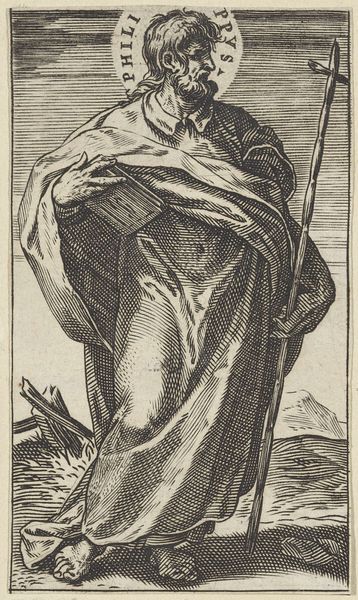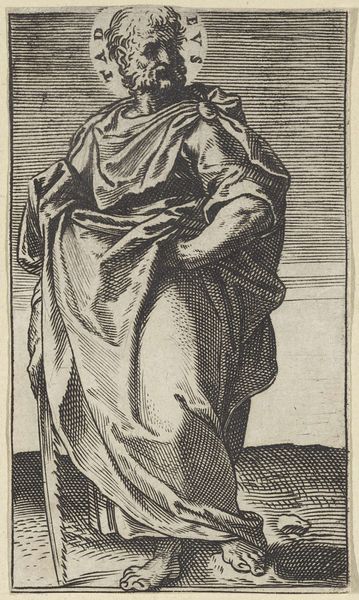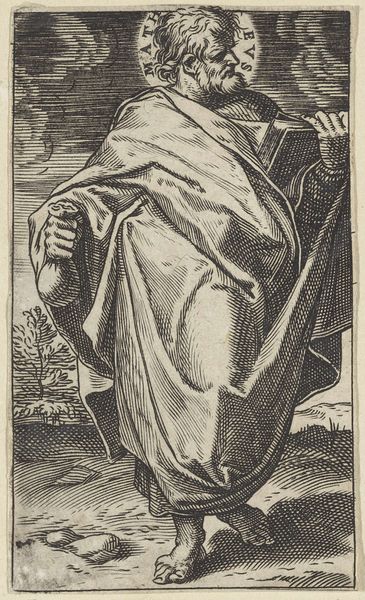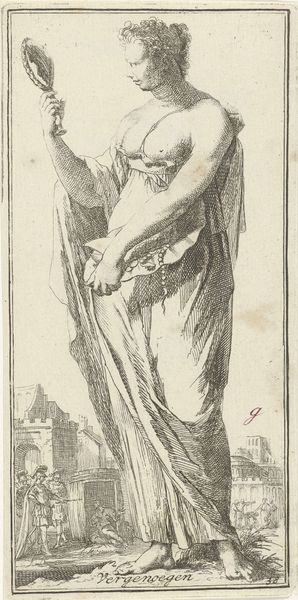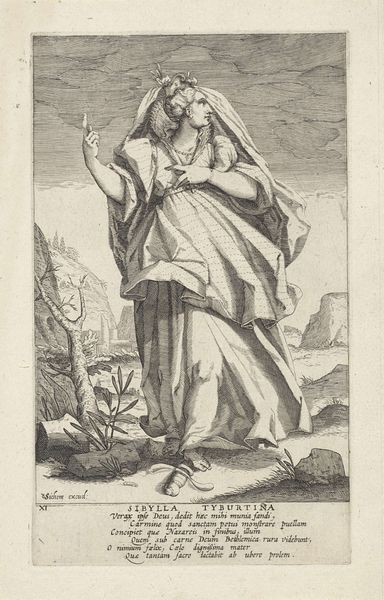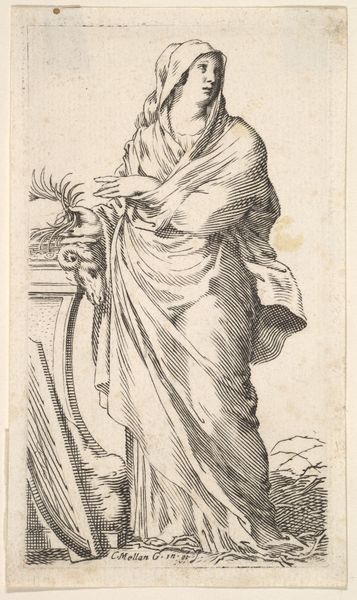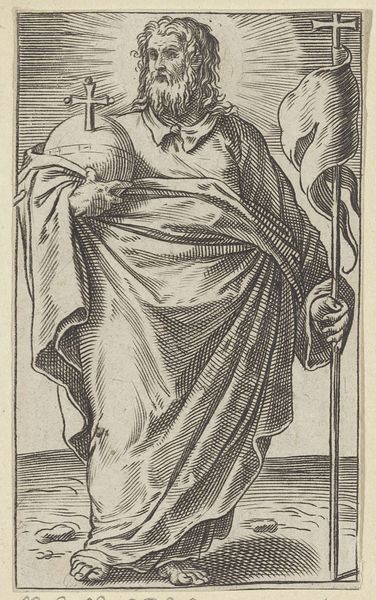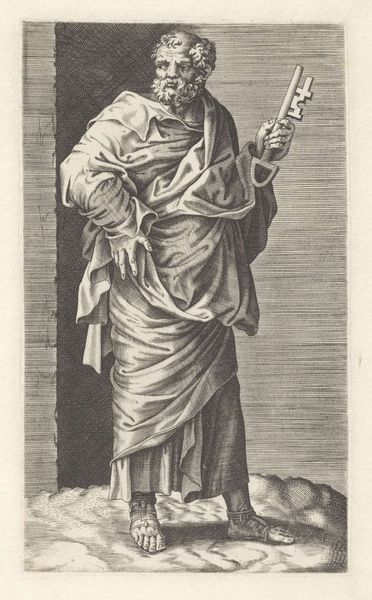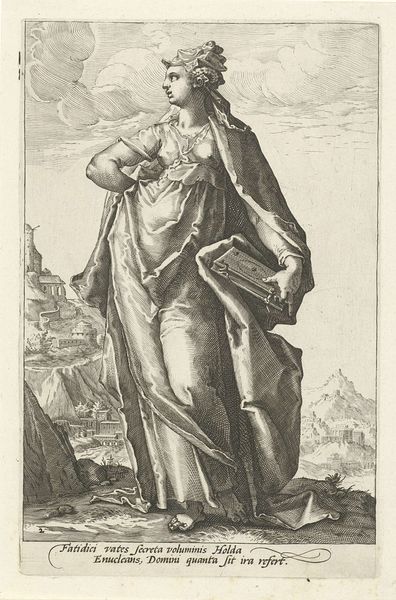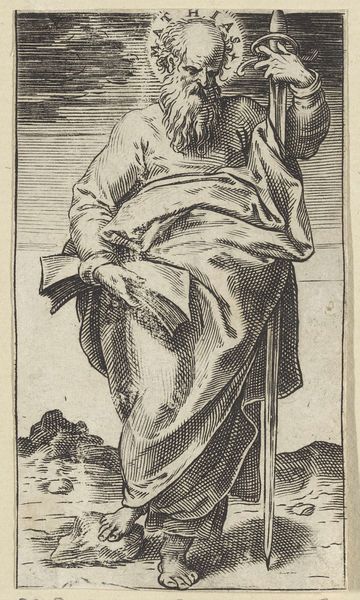
print, engraving
#
portrait
# print
#
mannerism
#
figuration
#
line
#
italian-renaissance
#
engraving
Dimensions: height 107 mm, width 65 mm
Copyright: Rijks Museum: Open Domain
Curator: This engraving from 1583, titled "Maria met een krans van sterren," or "Mary with a Crown of Stars," is the work of Agostino Carracci and is currently held at the Rijksmuseum. Editor: It evokes a sense of melancholy. The shading creates deep folds in her robe that gives a feeling of vulnerability and solemnity, particularly striking in such a small-scale piece. Curator: Precisely. Notice the artist’s effective use of line and cross-hatching, which adds depth and volume to what could otherwise be a flat representation. The swirling lines contribute a dynamism that captures the Mannerist style. Editor: Beyond the technical mastery, the work operates as a strong symbolic statement. The halo of stars and the hand placed over the heart denote not just holiness, but also empathy and a closeness to suffering – perhaps deliberately meant to engage a population grappling with intense societal change. It places Mary within the narrative of marginalized people. Curator: It’s interesting that you read that narrative of marginalization into it. From a purely compositional standpoint, the placement of Mary is very deliberate, forming an elegant pyramidal structure from her head to the base of the voluminous robe, effectively communicating balance. This allows Carracci to showcase her as an enduring form. Editor: It’s a question of audience isn’t it? Renaissance works, particularly depictions of the Virgin Mary, were hardly ever divorced from the context of class, power, and faith. A close reading reveals the possibility of Carracci creating work that, in that time, resonated with disenfranchised members of society, not just established figures. Curator: Certainly, art's interpretive capacity means it contains both – the personal and political alongside more abstract structural concerns. The enduring visual strength is undeniably present thanks to Carracci's command of form. Editor: Indeed. Art is rarely, if ever, produced or observed in a vacuum, and a deeper appreciation is found when one begins to ask "why?". In this piece it seems the enduring and perhaps the initial attraction lies precisely in this rich interplay.
Comments
No comments
Be the first to comment and join the conversation on the ultimate creative platform.
